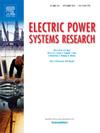基于残差学习模型的可解释风电预测
IF 3.3
3区 工程技术
Q2 ENGINEERING, ELECTRICAL & ELECTRONIC
引用次数: 0
摘要
准确的风电预测对于确保电网稳定和提高可再生能源系统的能源输出至关重要。现有研究优先考虑通过数据预处理和模型优化来最大化准确性,往往忽略了可解释性的重要方面。本研究提出了一种新的风力预测集成方法,该方法结合了两种强大的机器学习算法的优势,以提高预测准确性,同时提供透明和可解释的结果。该模型将CatBoost用于初始预测,XGBoost用于残差建模。所提出的集成的顺序体系结构在捕获复杂的非线性关系并因此解决模型偏差方面是有效的。此外,整合可解释的人工智能方法确保了影响预测因素的可解释性,从而确认了模型的透明度和可靠性。这种清晰度丰富了对模型决策过程的理解,从而验证了结果并增强了其在可再生能源系统中实施的适用性。本研究使用的数据集集成了多个气象、涡轮和转子参数,并使用MSE、MAE、R²分数和MAPE等标准评估指标对模型的性能进行评估。结果表明,集成技术优于单个模型,强调其在提高风电预测精度方面的潜力。本文章由计算机程序翻译,如有差异,请以英文原文为准。
Interpretable wind power forecasting with residual learning-based model
Accurate wind power forecasting is crucial for ensuring grid stability and enhancing energy output in renewable energy systems. Existing studies have prioritized maximizing accuracy through data preprocessing and model optimization, often overlooking the significant aspect of interpretability. This study proposes a novel ensemble approach to wind power forecasting that combines the strengths of two robust machine learning algorithms to enhance predictive accuracy while providing transparent and explainable results. The proposed model sequentially integrates CatBoost for initial predictions and XGBoost for modeling residuals. The proposed ensemble's sequential architecture is effective in capturing complex non-linear relationships and thereby addressing model biases. Additionally, integrating explainable AI methods ensures the interpretability of the factors affecting forecasts, thereby confirming the model's transparency and reliability. This clarity enriches the understanding of the model's decision-making process, thereby validating the results and enhancing their applicability for implementation in renewable energy systems. The dataset used in this study integrates several meteorological, turbine, and rotor parameters, and the model's performance is assessed using standard evaluation metrics, such as MSE, MAE, R² score, and MAPE. The results reveal that the ensemble technique outperforms individual models, emphasizing its potential to enhance accuracy in wind power prediction.
求助全文
通过发布文献求助,成功后即可免费获取论文全文。
去求助
来源期刊

Electric Power Systems Research
工程技术-工程:电子与电气
CiteScore
7.50
自引率
17.90%
发文量
963
审稿时长
3.8 months
期刊介绍:
Electric Power Systems Research is an international medium for the publication of original papers concerned with the generation, transmission, distribution and utilization of electrical energy. The journal aims at presenting important results of work in this field, whether in the form of applied research, development of new procedures or components, orginal application of existing knowledge or new designapproaches. The scope of Electric Power Systems Research is broad, encompassing all aspects of electric power systems. The following list of topics is not intended to be exhaustive, but rather to indicate topics that fall within the journal purview.
• Generation techniques ranging from advances in conventional electromechanical methods, through nuclear power generation, to renewable energy generation.
• Transmission, spanning the broad area from UHV (ac and dc) to network operation and protection, line routing and design.
• Substation work: equipment design, protection and control systems.
• Distribution techniques, equipment development, and smart grids.
• The utilization area from energy efficiency to distributed load levelling techniques.
• Systems studies including control techniques, planning, optimization methods, stability, security assessment and insulation coordination.
 求助内容:
求助内容: 应助结果提醒方式:
应助结果提醒方式:


